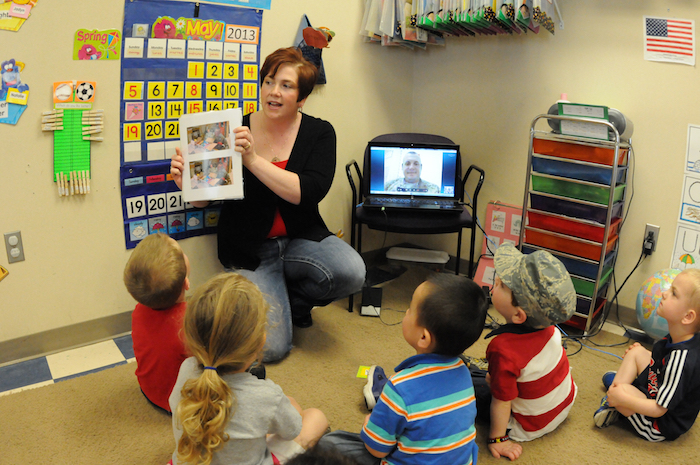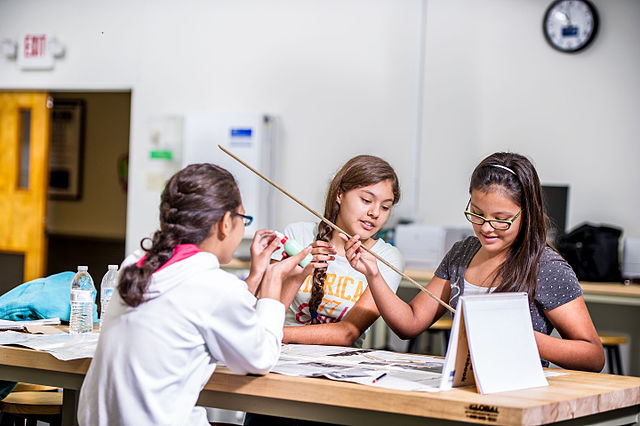While the public schools continue to struggle with declining enrollment and budgetary crises, some local private schools — like San Roque and El Montecito — are expanding, adding more grades and additional real estate to their offerings.
San Roque School expands to high school
San Roque School will offer a full course of classes for 9th and 10th grade students at its new campus at 2300 Garden St. beginning in the fall. Dubbed as one of the first progressive high schools in the area, San Roque plans to expand its offerings at the new campus through 12th grade by the time the 10th grade class gets there, said Headmaster Mike Hagan.
“There are a lot of educators out there that are very frustrated by a confining system that is based on politics and adult agendas and not necessarily on research and solid theory about how children or people engage with learning,” said Hagen, emphasizing the child-originated, teacher-framed curriculum philosophy which drives all of the programs at San Roque,
“This … is a really unique opportunity to have to only be accountable to what is best for children,” he said. “When we leave here, every decision we make is how does this benefit children? How does this help facilitate their emotional, their intellectual development? … And behind every decision, whether it’s the height of a sink that has water that is going to be filtered in it, so it’s safe, to the choice of personnel and materials that will help children stay excited about learning.”
At San Roque, rigorous academics are incorporated into real life experiences. For example, in a recent production of Into the Woods, students trained for the performance with theatrical actors and vocal coaches and had a small professional orchestra accompany the performance.
“If we give that idea to children that we’ll always give them the best help that we can, then they feel real important and they do their really best work,” said music director Donna Massello-Chiacos.
“They feel like professionals, they are actors. They’re not learning, about drama. They are actually participating so that they learn about the work of professionals and how professionals go about it and then they engage in that work,” said Hagen.
El Montecito School begins offering junior high
Building one grade at time, El Montecito School is adding a 7th grade to its upper school campus at 632 E. Canon Perdido St. in the fall. The plan is to go up to 8th grade, said Headmaster Jeannine Morgan.
Parents and students don’t want to leave, said Morgan. “We feel like we’re a big family. … Because we’re a Christian school we can build character and we can do things other people can’t do. … Our little motto is, ‘Where Character Meets Wisdom,’ and we have the privilege of really being able to do it in a unique way because we can really respond to absolutes, you know, what’s right and what’s wrong.”
The preschool program, which began in 1958, is critical to the whole school’s success, Morgan said. “Our key is not only that character meets wisdom but we also want to teach kids how to love learning and the younger you get them the easier that is to do. It’s a fantastic foundation for whenever they leave, wherever they go.”
The older kids love to interact with the young ones, and Morgan said they facilitate that whenever possible. For example, “last year the 6th graders … earned a reward from their teacher and they asked if they could come spend time in the preschool. … They played games with them and they read stories with them … they just love being with them. … This year’s 6th graders are writing creative stories and when they are done with their stories they’re going to bring them and they are going to share them in the preschool classrooms.”
Ideally, she would like to combine the lower school (now housed at 1455 East Valley Road in Montecito) and the upper school into one campus. They’ve been actively looking for a site, but real estate is expensive and hard to come by and Morgan wants to make sure that any expansion is done with sensitivity.
“We’re carefully taken steps of growth to make sure that its not going to jeopardize any other part of the program that we have. What the key for us is that we don’t lose what we have in any growth step. We want to continue with who we are and what we have, with anything that we do.”
For more information about El Montecito School, call 969.1482 or visit www.elmontecito.org. For more information about San Roque School, call 697.3717 ext. 128.





